QuestionQUESTION: hello im am soon getting a lepard gecko and i just wanted some useful info on the them because some websites say do somthing and some say a other
ANSWER: No problem! Most of the differences you see will probably be due to things being left out, or due to the fact that there can be more than one way to accomplish the same thing.
Take advice from breeders first, their advice will be the best. NEVER take advice from pet store personnel. I also recommend getting a recently published book on leopard gecko care.
Here's what leopard geckos need:
A 20 gallon long-sized tank or similar-sized reptile cage. This will house an adult leopard gecko. A hatchling will be a bit lost in it, so if you want to get a smaller cage for the first year, that's fine as well.
It should have a secure wire mesh top.
An undertank heat pad that covers at least half of the bottom of the tank. Use small rubber furniture feet to elevate the tank so it's not sitting on the cord.
A thermostat or rheostat to control the heat pad. Do not use any heat pad, heat tape, or heat cord without one, this is an essential piece of equipment, and it's one that care sheets frequently fail to mention. The heat output of undertank heaters increases as they age, and it will eventually get hot enough to burn your animal, so never just plug a heat pad into the wall without a controlling device.
Use paper towel, newspaper, or slate tiles for the floor of the cage. Leopard geckos are prone to eating loose substrates such as sand and wood shavings, so don't use them. Eating those materials can cause a deadly intestinal blockage--it's not worth the risk.
The leopard gecko should have 1 single-entrance hide that is small and close-fitting, for it to hide in on the warm side of the tank. It should have another one, called a moist hide, on the cooler side of the tank, or in the middle. The moist hide can be made by taking a small butter tub and cutting a round hole in the lid large enough for the gecko to climb in and out of it. Be sure the tub isn't too tall for the gecko to easily get in and out. Put damp sphagnum moss or paper towel in the moist hide. Change it every few days, to avoid bacteria or mold growth.
Provide a small, shallow dish of water for the gecko.
Provide another small, shallow dish of calcium powder that does not contain vitamin D3.
Feed your gecko gut-loaded crickets,, small grasshoppers, and other feeder insects available from your pet stores. Dust the insects with calcium powder containing vitamin D3, and once a week with a quality multi-vitamin powder for reptiles. Gut-loading means the insects have been fed for 24 hours on quality food such as a gut-loading formula, or fresh vegetables like carrot, dandelion greens, and squash, before you feed them to your reptiles. Thus, they will have a gut full of those good foods, and the reptile will get the nutrition from what they have inside them.
Hatchling geckos should be fed daily on insects that are no larger than the space between their eyes. Feed as much as they will eat in 15 minutes, and remove the rest. Don't leave live insects in the cage, if they aren't eaten, as they may stress out and nibble on your gecko.
Adult geckos should be fed every other day--again, as many insects as they will eat in 15 minutes, each time.
The floor of the cage over the heat pad should be kept at 32 C. Use a thermometer with a remote probe that you can put on the cage floor to keep track of these temperatures. The air temperature in the cage on the cool side should be about 27 C.
You can turn lighting and heating off at night.
Purchase your leopard gecko from a breeder, NOT from a pet store. Make sure the breeder is reputable, and has references. Leopard geckos should have bright, clear eyes that open fully, have a rounded body, and a big fat tail. Avoid any animal if its hip bones are prominent, eyes appear sunken or half-closed, it seems listless or lethargic, or its tail is thin. Leopard geckos store their body fat in their tail--a fat tail means a healthy gecko, and a thin tail means that it has not been eating or is ill.
Hatchlings should have a good fat tail, but the tail of an adult should be VERY fat--as wide as the animal's body.
Leopard geckos are nocturnal, so it is normal for them to sleep during the day, but they should be awake and active once the lights go out.
When you first bring the gecko home, leave it alone for 2 days, then offer food. Once it is eating well, you can begin short, gentle handling sessions after 1 week. This week gives the gecko time to get used to its new home. Reptiles can get sick if they experience too much stress, and having a new home is stressful. Handling is also stressful, which is why you should not handle a new gecko for longer than about 15 minutes per day.
You can slowly increase this over time, as the gecko becomes more tame.
If the gecko's behavior changes, if it begins eating less, etc...stop handling until it is behaving normally again.
If your gecko ever stops eating for more than a week, dramatically decreases the amount of food it eats, appears lethargic, or loses a lot of tail weight, take it to an experienced reptile veterinarian. Don't delay--by the time reptiles show signs of illness, they are usually extremely ill. Most reptile illnesses can be successfully treated with prompt attention, however.
---------- FOLLOW-UP ----------
QUESTION: thanks for the info but the pet shop is not a big corprot 1 like pets at home i have bought animals from there before and they have been very tame and lived past expectations so do you think it would be OK to buy my gecko from there.
ANSWER: Well, you may want to ask where their get their geckos from, and how they clean cages between shipments.
Unless they breed their own, it's about their suppliers as much as it is about them, you see. It's still a bigger risk than getting one from a local breeder, if they are having them shipped from a wholesaler.
---------- FOLLOW-UP ----------
QUESTION: hi im going on holiday soon for a week will it be ok if i feed the gecko well before i leave and leave a small bowl of meal worms for it
AnswerThis would be ok for a weekend, but if you are leaving for an entire week, you will probably want someone to stop by in the middle and refill the gecko's water dish.
If it is a fully grown adult with a very fat tail, it can go a week without food, no problem...if it is a hatchling, then it shouldn't go an entire week without food, and you'll want to have someone feed it at the same time it's given water.

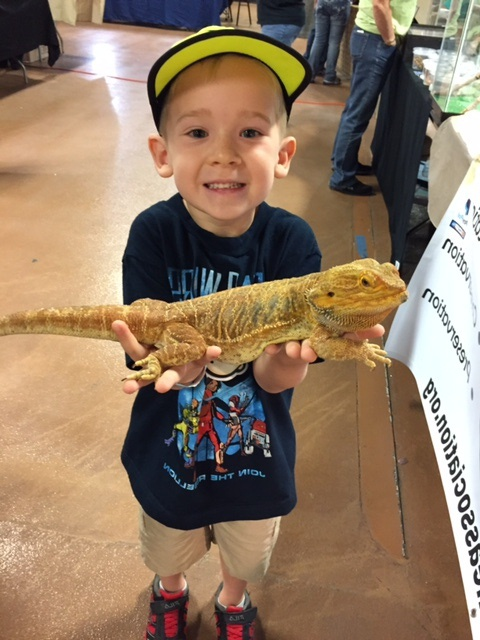 Eyes twitching on a bearded dragon
QuestionQUESTION: What could cause my 5 year old male b
Eyes twitching on a bearded dragon
QuestionQUESTION: What could cause my 5 year old male b
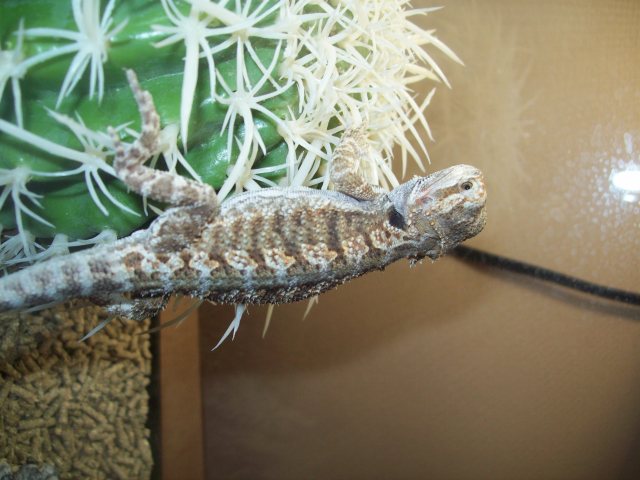 is my bearded dragon sick?
Question
Iggie the bearded drag
hello, my name is Jocel
is my bearded dragon sick?
Question
Iggie the bearded drag
hello, my name is Jocel
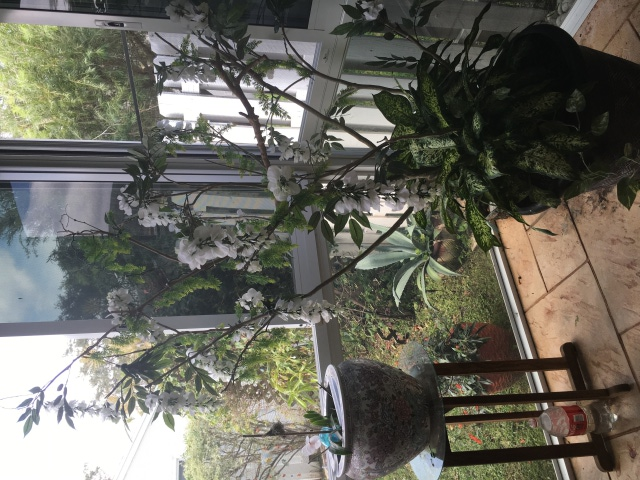 My 1 year old Chamaleon
QuestionRambo
His habitat
QUESTION: My on
My 1 year old Chamaleon
QuestionRambo
His habitat
QUESTION: My on
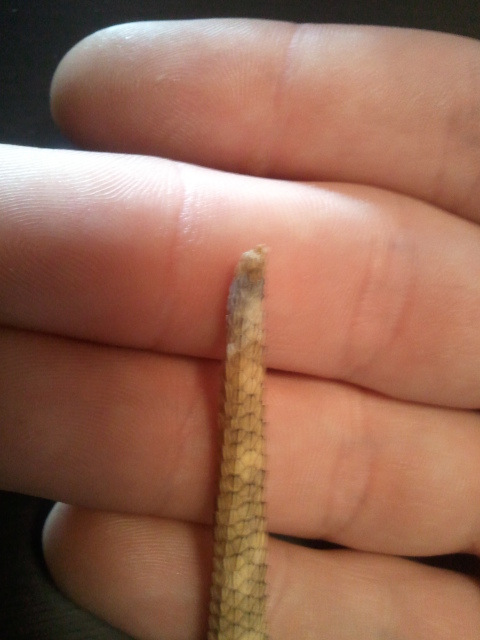 Beardies Tail
Question
Nessie
Hello, I recently noticed that t
Beardies Tail
Question
Nessie
Hello, I recently noticed that t
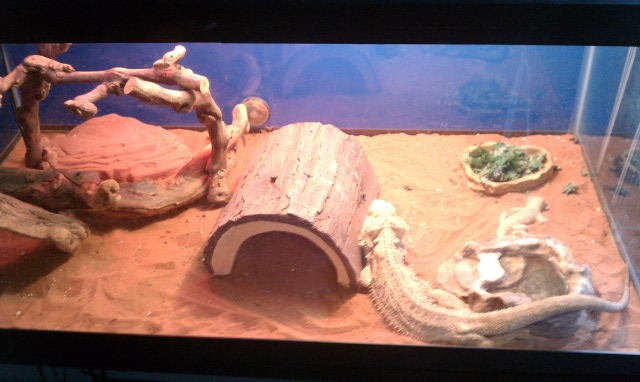 my bearded dragon wont move or eat
QuestionQUESTION: Hello my bearded dragon kiwi is 8 yea
my bearded dragon wont move or eat
QuestionQUESTION: Hello my bearded dragon kiwi is 8 yea